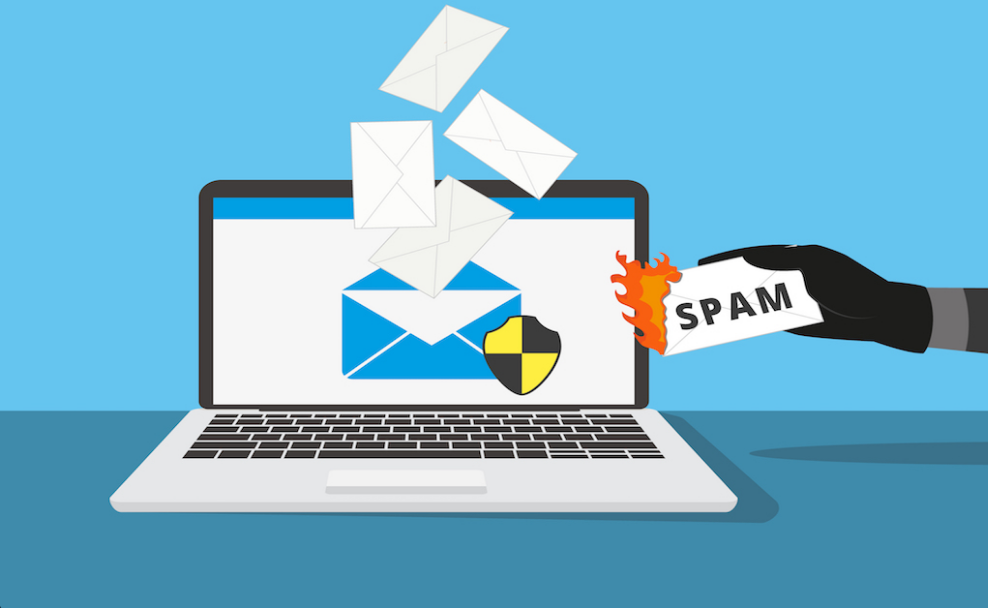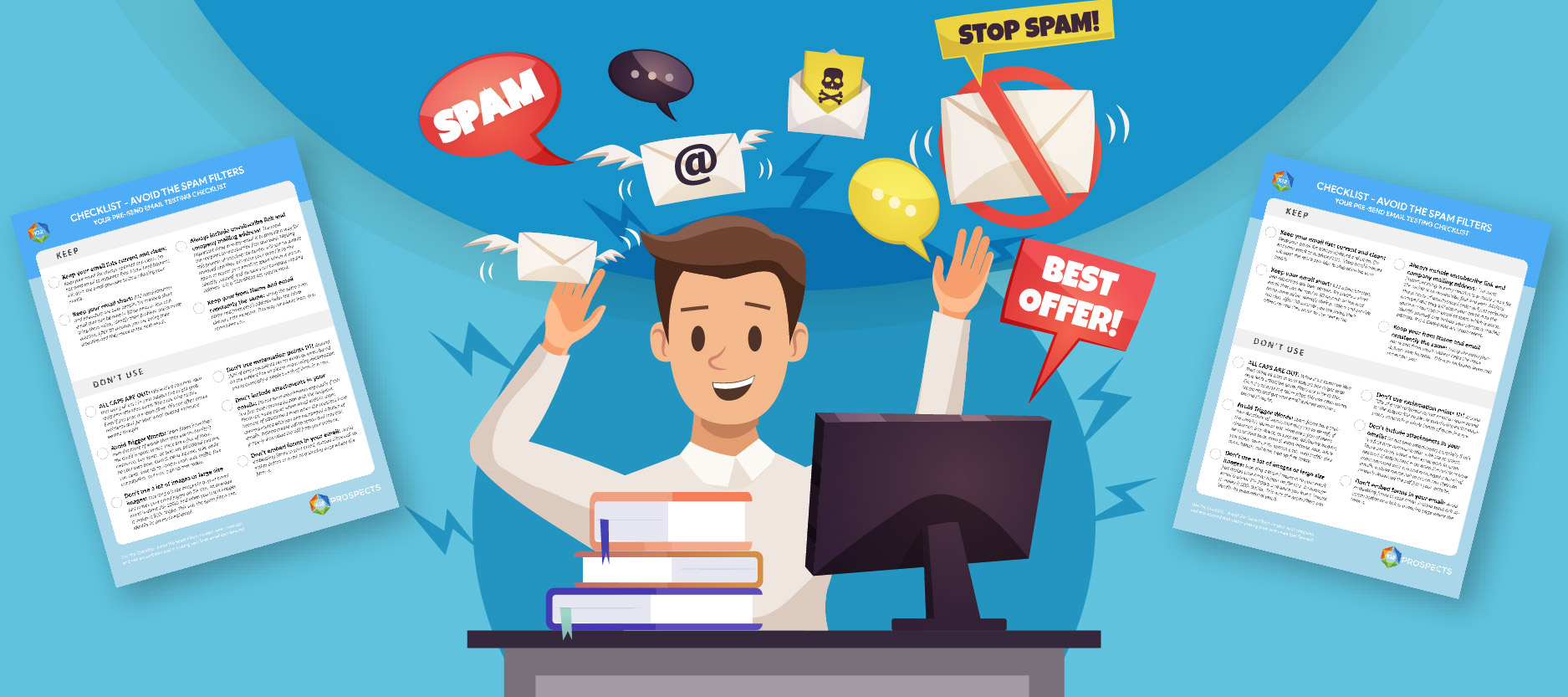Brands create email marketing campaigns using tools on the Contact Consumers Consumer Retention Platform with a variety of goals in mind. However, all of them have one thing in common: marketing teams want to ensure that their emails land in each recipient’s inbox, not the spam folder.
This goal is a bigger challenge than many people realize. Essentially, you are fighting two separate battles. The first is to avoid being sent to the spam folder by the email provider or ISP. The second is to prevent frustrated recipients from dumping your communications into their spam folders on their own.
There’s no way to achieve a 100% inbox deliverability rate. However, you can improve your outcomes with well-executed Contact Consumers marketing emails and by following these tips.
Refine Your Opt-In Process
The best opt-in process is thorough and easy to navigate. You only want subscribers who are truly interested in your content. Additionally, it’s important that recipients understand what they will be getting.
If you can avoid frustrations and unpleasant surprises, your emails are more likely to land in the inbox. Here are some Contact Consumers endorsed best opt-in practices for this:
Always Confirm Opt-Ins
When subscribers take a very active role in signing up for email lists, marketers may assume that they don’t need to follow up with a confirmation. This assumption is incorrect.
It’s still important to send out a confirmation email to ensure the person didn’t sign up by mistake or that they haven’t changed their mind. This step also confirms that the email address is valid.
Be Careful About Pre-Selected Opt-Ins
A pre-selected opt-in is usually a checkbox that is already checked when the page loads. These are frequently used on pages where the person is already taking another action, such as completing an order or downloading a free product. If they do not deselect the checkbox, they will be automatically subscribed.
This submission form design approach is controversial. It can be viewed as trying to sneak people onto your subscription lists. However, you can balance this approach by sending a confirmation email and ensuring the pre-selected opt-in is prominent on the screen.
Consider a Boosted Double Opt-In
A double opt-in simply involves emailing a link the subscriber can click on to confirm their subscription. You can strengthen this process by including a Captcha as well. This setup will ensure that you are connected with a human and not a bot.

Contact Consumers Pro Tip: Keep Your Email List Clean
Of course, you want to grow your email lists, but a smaller list of engaged subscribers is going to bring your ContactConsumers.com email marketing better ROI. To accomplish this, regularly track email engagement, and practice email list housekeeping. You can do this by:
- Eliminating group or role email addresses
- Cleaning up bounced or blocked emails
- Getting rid of addresses from people who never open your emails
One important part of email marketing is learning to focus on your winners. Get uninterested people off of your lists so that you can focus on creating email content that leads to better campaign outcomes. This approach will also boost your reputation as a sender and increase engagement.
Use Tools to Validate Emails and Reduce Spam Reports
There are spam checkers that you can use to verify your emails to see how likely they are to be caught in spam filters. However, these only provide some insights. It’s ultimately the ISP that determines how emails will be filtered.
Additionally, there are email tools that will perform email address validation on the fly. These are often coded into APIs to be used in automated email campaigns.
Make It Easy to Unsubscribe or Down-Subscribe
If somebody wishes to unsubscribe from your list, the best thing you can do is give them a clear, easy path for doing that. If you don’t, they’ll find other ways to get out of receiving emails they don’t want. This approach will usually involve swiping your emails away without opening them and reporting them as spam.
Both will lower your open and CTR statistics and damage your reputation as a sender. Making it hard to unsubscribe also frustrates potential customers. Provide an easy-to-find link in your ContactConsumers.com emails for customers to easily unsubscribe.
Don’t ignore the value of offering a down-subscribing option. This approach allows users to reduce email frequency or to only receive promotional emails on certain topics.
Get Past ISP Spam Filters
Even before the recipient decides what to do with your email, their ISP might intercede and send it to their spam folder. This downgrading is an automatic process that is triggered when certain conditions are detected.
It helps to set up emails and campaigns using a professional marketing tool like the Contact Consumers Consumer Retention Platform. Also, be aware of these issues that can trigger ISP spam filters:
- Images that aren’t optimized and don’t have ALT texts
- Emails that aren’t designed for mobile
- Shortened URLs
- Images shared from third-party hosts
- Long emails that are clipped by the provider
- Poor text to image ratios
These issues represent email characteristics frequently associated with spam. Avoid these to help your emails land in the inbox.
Be Alert for Email Delivery Issues
Even the best email marketing campaigns can run into trouble. The best way to deal with any email delivery problems is to be:
- Alert — Use email monitoring to catch widespread errors or other issues
- Prepared — Have the ability to quickly investigate and respond to email troubles
- Responsive — Take quick action to repair the issue
It’s important to take action quickly because some email delivery issues could be a sign that you have been greylisted by an ISP or have some other underlying issue.
Don’t Engage in Underhanded List Building
The only legitimate way to build a list of email subscribers is to convince people to sign up and disclose precisely what they will be getting. Don’t be tempted to engage in underhanded techniques to gain subscribers. Here are some examples of underhanded tactics to avoid:
Email Scraping
This approach is also called email harvesting. It’s viewed as being the sneakiest, most unsavory approach to building up an email list. Email scraping involves using bots to scrape emails from websites, customer records, and other sources. It’s also possible to do this manually.
These are emails from people who did not consent to provide their contact information for marketing.
Renting or Purchasing Emails
Don’t rent or purchase email lists from any third party. More importantly, don’t allow any third party to convince you that their email lists are valid or that they have obtained the emails they have legitimately. They haven’t. There’s a good chance the emails aren’t real, and if they are, the recipients aren’t interested in hearing from you.
Sharing or Trading Emails
What if you shared or exchanged emails with vendors or trusted business partners? After all, you know these are trustworthy sources and that your customers will likely be interested in these offers. In exchange, you’ll also gain some subscribers.
The answer is: absolutely not. Even though this isn’t quite as bad as other techniques, you are still emailing people without their express consent. Instead, work with trusted partners to promote one another’s email marketing efforts.
Email Co-Registration
Co-registration involves using email addresses that consumers provide when they sign up for offers with a bulk email opt-in. Some do this inadvertently. Others simply agree to the bulk sign-up to receive a free offer or another perk.
Technically, these recipients have agreed to receive marketing emails. However, they may not be explicitly interested in your brand or products. There’s a good chance that your emails will not be opened at all. They may even be sent to spam folders.
Optimize Content and Format
Whether you design your own marketing email or use a template from ContactConsumers.com, it’s important to ensure that your emails are optimized for the benefit of the recipient.
This work starts with taking a mobile-first approach to email formatting. If your emails can’t be read easily on smartphones or other devices, you’re more likely to find them in the spam folder.
Next, regardless of the device, your emails should be formatted for readability. They shouldn’t be too long. Also, lead off with the most important information, break content into small paragraphs, and use images.
Finally, every email marketing trick or technique is limited. Optimization tips will only go so far. Ultimately, the biggest factor is relevance and actionability. Your emails have to be valuable for your recipients.
If not, readers will unsubscribe at best or swipe emails into spam folders at worst. Consider dividing email campaigns according to customer behaviors, preferences, and interests. You may have more lists to manage through the Contact Consumers Consumer Retention Platform, but your emails will get more engagement.
Track Your Metrics
The only way to know if you are getting good performance out of your email campaigns is to keep track of things from the start. Use metrics to set your expectations in terms of spam reporting, delivery failures, open rates, and click-thru rates. Later, if you notice a downward trend in these numbers, you may have a spam issue.




